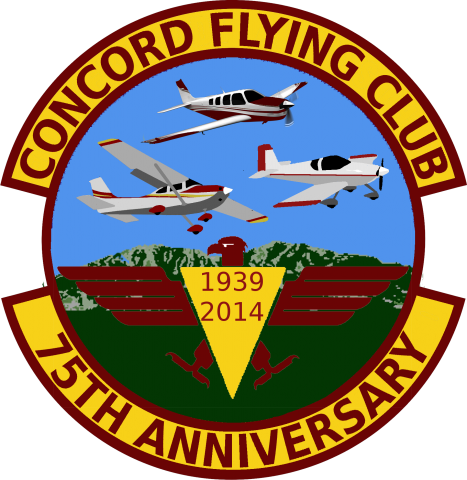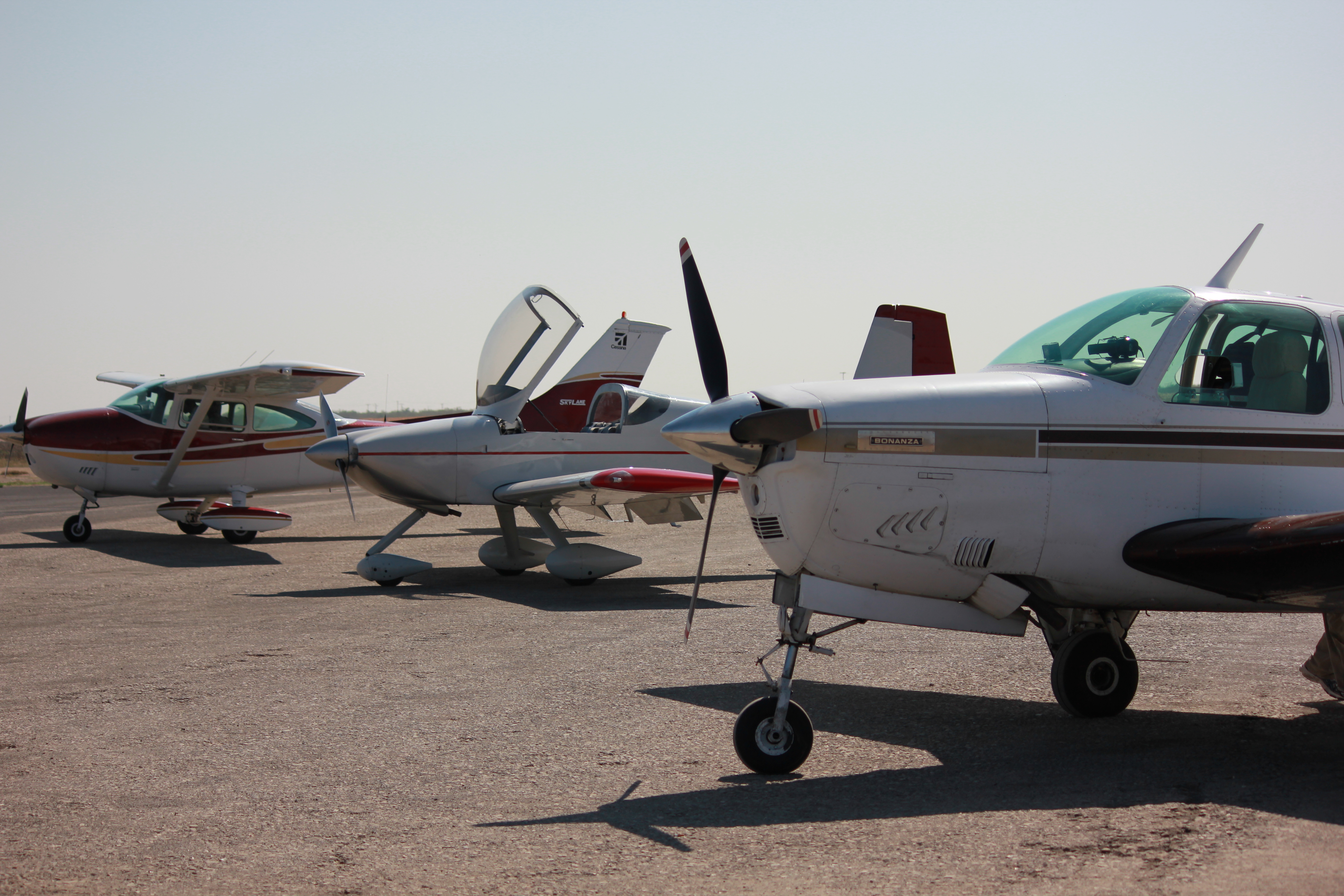
For 75 years, the members of the Concord Flying Club have flown a variety of aircraft—a collection that started with a J-4 Cub and has included a Bellanca Cruisair, Cessna 140s, 170s, and Mooney’s. The club even had the same 172 in the fleet for 50 years! Today the equity-based club of 33 members operates a Bonanza A-36, a C-182, and a Van’s RV-7A (which you can read more about in the "Aircraft Spotlight"). Jim Casper and Kevin Hanrahan talk about how the club’s interest fleet and membership process have kept it a tight-knit social flying club since 1939.
Name: Concord Flying Club
Location: Buchanan Field (KCCR), Concord, CA
Website: http://www.cfc1939.org
Year formed: 1939
Aircraft: 1971 A-36 Bonanza ($165/hr), 1973 C-182P Skylane ($145/hr), 2006 RV-7A ($97/hr)
Rates: Tach hours, wet. All three aircraft are owned by the club.
Joining fee: $7,230 buy in, returned when the member leaves the club.
Monthly dues: $100 per month
Membership: 33
Scheduler: Custom software
 Your fleet is a bit different than most clubs. Tell me about it.
Your fleet is a bit different than most clubs. Tell me about it.
We’ve got a two-seater (RV-7A), a four-seater (C-182), and a six-seater (Bonanza A-36). Not every mission is the same. We try to cover as many bases as we can with the fleet and I think we have a good mix.
We’ve always had one of three kinds of airplanes—a high-end that you could put the family in, a comfortable airplane with some distance to it; a low-end that’s cheap to fly and fun; and then something in the middle.
The RV-7 is our low-end but it’s also very fast. It’s the most popular airplane now. Our high-end plane has to be a Bonanza. The club has had Bonanzas going back to the ‘50s. The one we have now we’ve had for about two years. It replaced a V-tail S-35 that the club had for close to 30 years and we had a V-tail before that one as well. It’s expected the club will have a Bonanza.
How much does each aircraft fly a year?
In a good month the RV and Bonanza will fly somewhere between 30 and 40 hours. And the 182, the best month last year was 15 hours; it’s usually 8 or 10 hours per month.
How is the club structured?
We have club officers—president, vice president, secretary, and treasurer—but we don’t have a board like most clubs. Anything but a trivial decision is made by the club as a whole. It doesn’t matter if you’re president, you don’t have more say than anybody else in the club. It’s kind of a pure democracy; New England town hall style, I guess.
What we do is after a member has been in for a year or two we have a process. We elect a guy to secretary. He spends a year documenting our trivial affairs and the next year he becomes vice president and the year after that he becomes president. He just moves up the ranks. It works pretty well. Sometimes people are reluctant to do it, but we try to have everybody do it at least once to see what it’s like.
We have a perpetual treasurer. That makes things a lot easier because you don’t want to switch the changing of the books over ever year. Then we have an audit committee. Once a year we go through the books, oversee what’s going on, and what the costs are. The whole point of this exercise is to see if we need to make any adjustments to our dues or our aircraft rates or anything else.
How does membership work?
We all buy equity in the planes, so we’re all part owners. We have 33 active members. A long time ago we established 10 people per airplane. There was a belief, and maybe at one time it was true, that there was a break point for insurance rates and if you went over a 10:1 ratio of pilots to airplanes you’d get dinged with higher premiums.
The other argument is you want to keep the availability for the members. It’s generally very good and we want to keep it that way. If you look at the hours per year that the planes are flying, and the national trend that people don’t fly as much, we knew we could increase to 33.
We’ve got several guys that have been in the club for 40 years. We’ve also got a couple of emeritus members that still like our club, but don’t have their medicals, anymore. They still want to hang around. They’re charged a moderate amount of money but a lot less than the rest of us.
How do you become a member?
We try to be somewhat selective. We’re looking for good members to participate and help with the planes. We have a three-business-meeting process, and business meetings are once a month. The prospective member comes and reads his application—we call it a reading—to the entire club and takes questions from the entire club. He has to go through that ordeal three times to be eligible to be voted on as a new member. In the long run it’s very good for the club and I think it’s one of the keys to our success.
It’s kind of a self-selecting process. It’s extremely unusual for the club not to accept a member. It gives the prospect a chance to get to know our club, a feel for our culture, and they can say this is a good club for me or it’s not a good club for me. So by the time that third reading comes around, they know if they fit or not. Like everything else in the club, everybody votes. The club has been doing this for decades. It dates back to at least the ‘60s, maybe earlier.
Do you hold many events?
After 75 years, we’ve got a great historical perspective. We carry on traditions and one is that we’re a very social club. We meet every week throughout the year, but not Thanksgiving or sometimes other holidays. We have a rotation where people bring food and drinks for everybody, so there is a lot of camaraderie, which I think is pretty unique. On any given Thursday, there are 15 to 20 people on average. Business meetings are once a month and tend to be a bit higher attendance. This is a dedicated group of hardcore, good members.
We do a lot of events throughout the year. In April we pick our new secretary and in May we have the installation dinner. We have a little party, indoctrinate the new person coming in, and elevate everyone else.
Every October we have a landing contest. We take our planes out to a remote strip, make up rules and try to land as close to the line as possible without going in front of it, then we come back and have another party.
We do things that are more family oriented. We do a crab fete every year, which is real popular. Some of the members organize little trips—we’ll go to an air museum, spend the night down in southern California.
Tell me about your maintenance crews.
We divide the membership up into five monthly maintenance crews. Every member gets assigned to one and every month a crew comes out and does preventative maintenance and washes all three airplanes.
We have a pretty extensive check list to go through—check the oil, fill it if it’s needed, check tire pressure, check the battery—some of the things you don’t normally check on a preflight inspection. That has people going out and realizing, hey, this is my airplane so I'd better take care of it.
I don’t think anyone looks forward to his month, but it’s necessary. And it’s only a few hours on a Saturday. Our planes are very well maintained. You can tell they are way above average in terms of how they look and how we take care of them.
Tell me about your online scheduler.
We do our own web scheduling. We used to use aircraftclubs.com but they only do scheduling. There is no check-in process. We thought it would be good to have a site where you could come back in from a flight, put in the tach times and how much fuel you got. That way all the hours are tracked and that creates our billing. It saves our treasurer a lot of work.